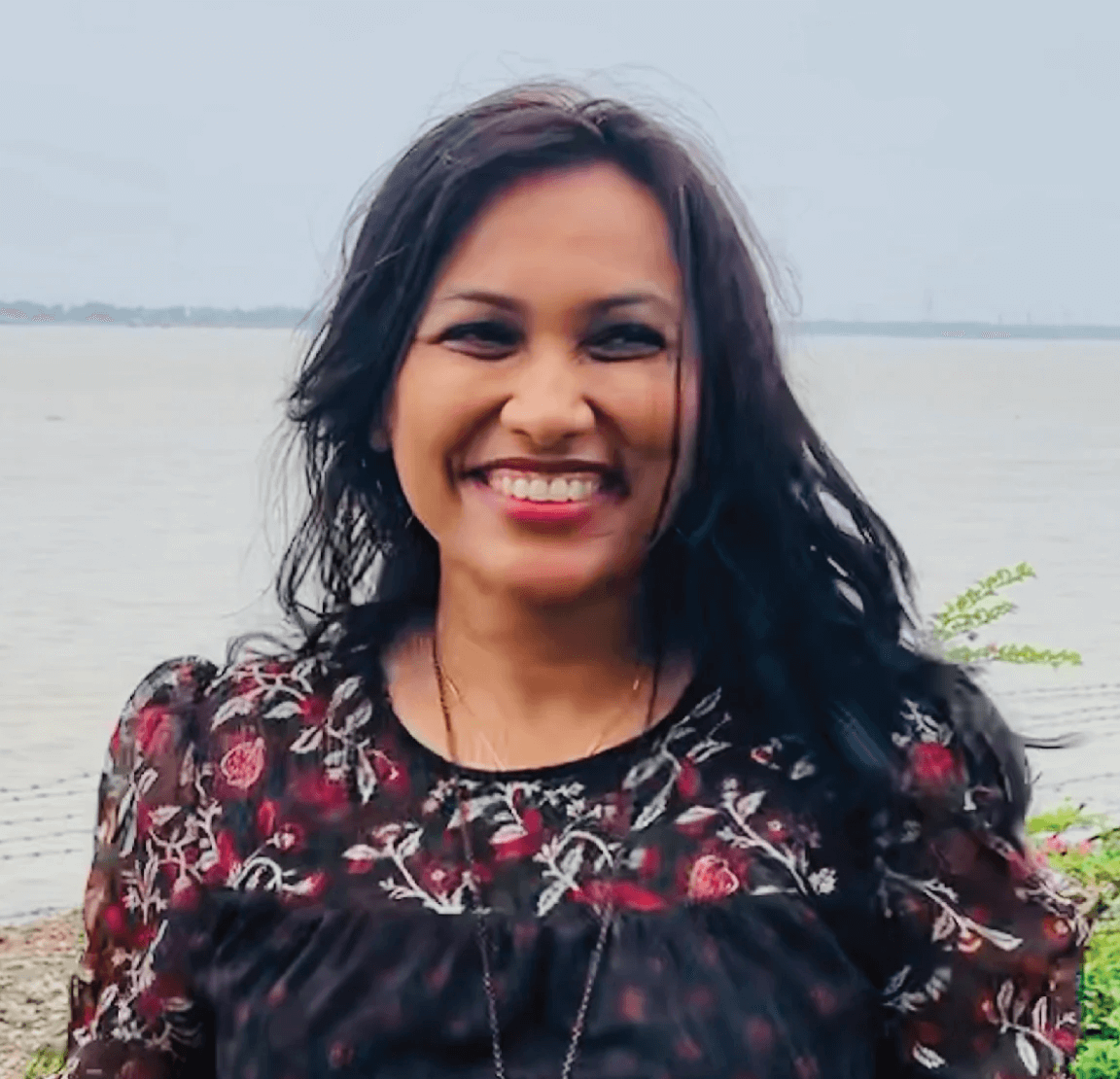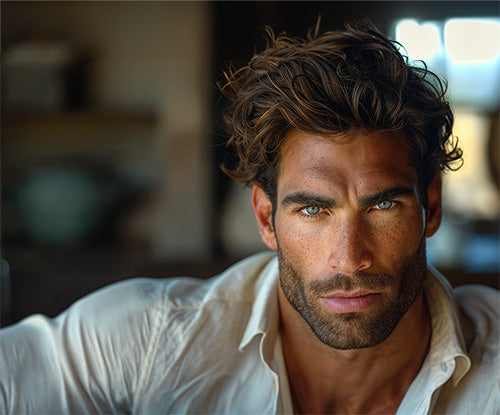Science of LLLT
To understand how LLLT grows hair, we need to understand the hair growth cycle first
Each hair on your head grows in a characteristic cycle with several phases. First, the hair follicle is in ANAGEN (Growth) phase for 2-6 years during which the hair grows. Next comes Categen (transition) for 1-2 weeks , where the hair stops growing and follicle shrinks and detaches from the skin. Final phase is the Telogen (fall out) phase for 5-6 weeks, when the hair is released or “falls out”. During this phase, that hair follicle remains inactive (no new hair growth). After the hair falls out, the follicle returns to Anagen phase, and grows new hair and the cycle begins again.
Due to several causes, such as aging, hormones, DHT, lack of proper nutrition, stress etc - the follicles shrink over time, and produce shorter, and thinner hair with each cycle and eventually stop producing altogether. This process is called miniaturization. This is what we call androgenic alopecia.
HAIR growth CYCLE

Learn more about the Hair Growth Cycle. Click Video
What is Laser Hair Therapy?
Low level light therapy (LLLT) is also known as Laser Hair Therapy, (LHT) or PhotoBioModulation (PBM). It is a well-established, well-documented and well-studied therapy that is used to treat hair loss, and to promote hair growth in both men and women. It does so by improving nutrient supply to the hair follicles and by improving cellular level metabolism of the hair follicle. LLLT helps push the hair from Telogen to Anagen phase, and prolongs the Anagen phase thereby reversing the miniaturization process and growing more hair, and improving the strength and thickness of the hair.

How does LLLT work. Watch Video


How it all started?
In 1967, Hungarian scientist Endre Mester was working fervently in his laboratory. He was studying the healing effects of red laser on tumors in mice. Mester was attempting to replicate an American colleague’s experiment, who had shown red laser could cure tumors implanted in a hamster.
He performed delicate surgery on each of his subjects, shaving the site for incision, and implanting the tumor tissue. He then illuminated this surgical site with red laser for carefully measured periods of time. Unbeknownst to Dr. Mester, however, his laser contained only a fraction of the power of that used by his American colleague. Needless to say he did not cure any of the tumors, but he did notice something else: increased rates of wound healing, and hair regrowth.
Dr. Endre Mester
A pionner in the field of Low-Level-Laser Therapy
Development of Science - Mechanism of Action
These astute observations gave birth to the field of Low-Level-Laser Therapy, or LLLT (also known as Low-Level-Light Therapy, Photobiomodulation Therapy (PBM). Subsequent experiments showed that low intensity red laser had very unique properties when shown on living cells, tissues, and organisms. Namely, this specific kind of light could relieve pain, heal wounds, and regenerate tissues, restoring their natural form and function.

Cytochrome c oxidase, a specialized molecule within the mitochondria of our cells is energized when it absorbs red laser light. This enhances growth factor production, extrecellular matrix deposition, cell proliferation & motility, anti-apoptosis and pro-survival.
Applications of LLLT
Low-level light therapy (LLLT) has been used since the 1960s to treat various medical conditions such as alopecia, chronic ulcers, and chronic pain, headaches, musculoskeletal, and neuropathic pain without major adverse side effects. The use of low levels of visible or near-infrared (NIR) light for reducing pain, inflammation and edema, promoting healing of wounds, deeper tissues and nerves, and preventing tissue damage has been known for almost forty years since the invention of lasers.
Fields of medicine using LLLT:
- Physical therapists: to treat a wide variety of acute and chronic musculoskeletal aches and pains
- Dentists: to treat inflamed oral tissues and to heal diverse ulcerations
- Dermatologists: to treat edema, non-healing ulcers, burns, and dermatitis
- Orthopedists: to relieve pain and treat chronic inflammations and autoimmune diseases
- Veterinary Medicine
- Sports Medicine and Rehabilitation Clinics: to reduce swelling and hematoma, relieve pain, improve mobility, and treat acute soft-tissue injuries.
World-wide adoption of LLLT for treating hair loss.
In the last 15 years, low-level light therapy has gained mass acceptance worldwide by both physicians and consumers as an effective home-use treatment for hair growth. Most hair loss physicians world-wide use LLLT as a critical component of their treatment plan.

Dr. Russell Knudsen explains how laser cap works and why it’s the best home-use treatment to grow hair.

Treat Female Hair Loss w/ FDA-cleared LaserCap on TheDoctors TV

Dr. Vineeta Keswani on CBS News explains how laser cap regrows hair
Header: 272 diode laser cap, 44 participants. 51% new hair count in 17 weeks.
More than 13 clinical trials and 21 relevant studies have been conducted and hundreds of research papers written on LLLT for hair growth. This science is both deemed safe and effected by the FDA to treat hair loss and promote hair growth and is cleared for home-use.

Laser Therapy:
Ideal Dosage for Best Results
Optimal dosage of light is essential to see desired benefits with laser hair therapy. Accordingly to The Arndt Schultz curve, upto 4j/cm2 is the ideal dosage that should be administered to the scalp for best results. Laser cap devices with 272 true medical grade laser diodes, deliver dosage which is closer to the optimal dosage required.
LLLT vs. Other treatments. A Detailed Comparison.
Large, high quality clinical studies have shown LLLT to be an effective treatment for hair loss.¹ LLLT is cleared by the FDA as both safe and effective for BOTH men & women. It is the ONLY FDA cleared therapy with no adverse or serious side-effects. Moreover, LLLT works well in combination therapy with other treatments.

Abbreviations : FDA, US Food and Drug Administration; M, males. F, females; AGA, androgenic alopecia; FPHL, female pattern hair loss; PRP, platelet-rich plasma.
Cost Comparison
LLLT is not only safe and effective, is by far the most affordable treatment for hair loss.
5 year cost of hair loss treatment.

Low level laser therapy is the mosr affortable, as well as the least inasie side effect free hair loss treatment in the world.
Device comparison
Why GROW LASER 272?

- *https://dash.harvard.edu/bitstream/handle/1/12152951/3986893.pdf?sequence=1
- *https://www.ncbi.nlm.nih.gov/pubmed/24474647
- *https://clinicaltrials.gov/ct2/show/NCT03331003
- *https://clinicaltrials.gov/ct2/show/NCT01967277
- *https://www.ncbi.nlm.nih.gov/pmc/articles/PMC3944668/
- *https://journals.lww.com/prsgo/fulltext/2019/04000/laser_assisted_hair_regrowth__fractional_laser.22.aspx







